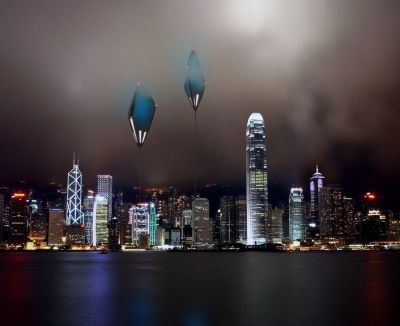Does the "clipper in the clouds" hold the key to the future of travel?

Your support helps us to tell the story
From reproductive rights to climate change to Big Tech, The Independent is on the ground when the story is developing. Whether it's investigating the financials of Elon Musk's pro-Trump PAC or producing our latest documentary, 'The A Word', which shines a light on the American women fighting for reproductive rights, we know how important it is to parse out the facts from the messaging.
At such a critical moment in US history, we need reporters on the ground. Your donation allows us to keep sending journalists to speak to both sides of the story.
The Independent is trusted by Americans across the entire political spectrum. And unlike many other quality news outlets, we choose not to lock Americans out of our reporting and analysis with paywalls. We believe quality journalism should be available to everyone, paid for by those who can afford it.
Your support makes all the difference.A hotel at 12,000 feet may sound ridiculous, but airships could soon be enjoying a renaissance, according to Samsung.
The firm has released pictures and a video of its "Aircruise" concept February 3, a giant, vertical airship powered by natural energy and designed to carry passengers in style. The current concept is effectively a hotel in the sky, with low passenger numbers and huge internal areas for living, dining and relaxing. The concept behind Aircruise is time and space - a slow, leisurely journey in the sky towards a destination, designed to appeal to those looking for a more serene, reflective journey.
"It's a world cruise not limited to the ocean, offering instead the dream-like quality and absolute freedom of flight," explains Nick Talbot, design director at SeymourPowell, the company that envisioned the concept for Samsung. "The Aircruise concept questions whether the future of luxury travel should be based around space-constrained, resource hungry, and all too often stressful airline travel."
The initial design includes a bar/lounge zone, four duplex apartments, a penthouse and five smaller apartments, all set within the 265 meter tall superstructure. Without passengers, it is roughly the same weight as a jumbo jet and is given lift by four gas-filled envelopes, which contain 330,000 cubic meters of hydrogen. On-board power is provided by solar panels affixed to the top of the craft, which are supplemented by on-board hydrogen fuel cells.
The physics of an airship require a huge volume of gas to lift with fairly prohibitive restrictions on weight, making them ideal for passenger transport methods that can run with a low passenger load. The Aircruise has a cruising speed of 100-150 km/h, making it capable of a London to New York journey in around 37 hours.
At the moment, the Aircruise remains a feasibility study between Seymourpowell and Korean electronics giant Samsung. The use of airships as public transport has proved adept at capturing public imagination through the years, although few have effectively reached production - let alone commercialization - stage. A series of high profile accidents, most famously the fireball of the Hindenburg, turned the public off airships in the early 20th century and passenger airship concepts since then have struggled to gain traction. However, the efficiency of the concept, which requires virtually no power to lift, has led to renewed interest since the dangers of global warming became apparent.
Video: http://www.youtube.com/watch?v=bP15Vgt55Gk
Join our commenting forum
Join thought-provoking conversations, follow other Independent readers and see their replies
Comments